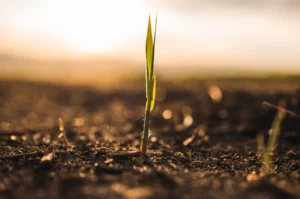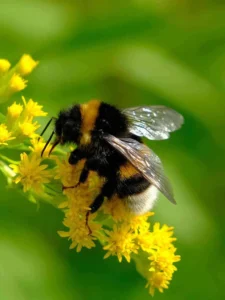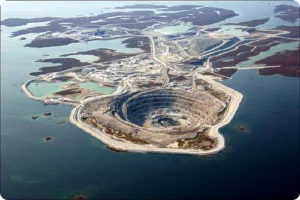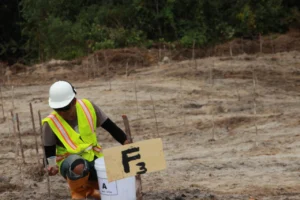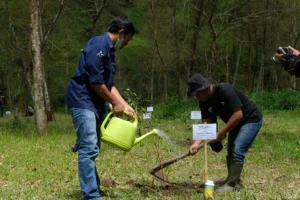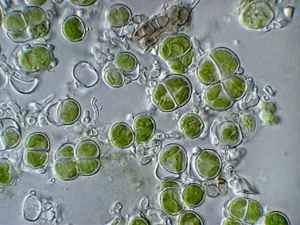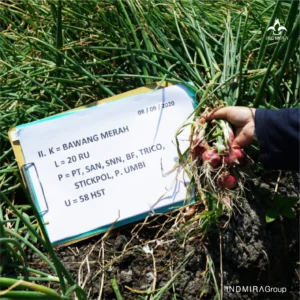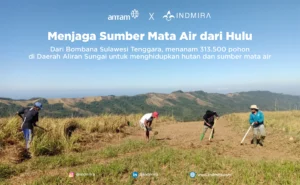The world is becoming increasingly concerned with agricultural production, especially food production. This is related to the projection that by 2025, the global population will increase by 1.4–1.5 times from what it is today. Based on trends in national food demand, particularly rice, corn, and soybeans, by 2025 around 4.7 million hectares of new farmland will be required. To secure rice production until 2025, an expansion of approximately 1.4 million hectares of paddy fields is needed, while soybeans require about 2 million hectares and corn about 1.3 million hectares. The growing need for agricultural land does not align with the availability of productive land for farming.
Productive agricultural land continues to decrease due to the shrinking of fertile land for various non-agricultural uses. Utilizing productive land such as forests for agriculture is certainly not the right action, especially with the continued reduction of our forest areas. Therefore, there is a need to utilize land that has not been widely used so far, namely marginal land. According to Nasih Widya Yuwono (2009), marginal land can be defined as land of low quality because it has several limiting factors if used for certain purposes. Marginal land generally faces soil fertility constraints and drought. Examples of marginal land include peat soils, ex-mining lands, drylands, sandy soils, coastal lands, and deserts.
Factors that can cause marginal land in an area include:
- Drought, usually occurring in rain-shadow regions.
- Continuous waterlogging, such as in coastal areas covered by swamps.
- Soil erosion and mass wasting, typically found in highlands, mountainous areas, and sloped regions. (Mass wasting refers to the downslope movement of soil mass.)
- Poor land management that neglects environmental sustainability aspects. Critical land may occur in highlands, mountains, sloped areas, or even lowlands.
- Introduction of long-lasting materials into farmland (non-biodegradable by bacteria), such as plastics. Plastic can persist for about 200 years in the soil, severely disrupting soil fertility.
- Freezing water, which occurs in polar regions or very high mountains.
- Pollution, such as pesticides, industrial waste, or mining residues entering farmland via rivers or other pathways, causing farmland to degrade into critical land. Certain pollutants may remain in the soil for years, severely impacting soil fertility.
Marginal land in Indonesia can be found in both wetlands and drylands. According to Suprapto (2003), marginal wetland areas include peatlands, acid sulfate soils, and tidal swamps covering 24 million hectares. Meanwhile, marginal dryland areas include Ultisol soils (47.5 million hectares) and Oxisol soils (18 million hectares). Indonesia, with a coastline of 106,000 km, has a potential coastal sandy area of about 1,060,000 hectares, which also falls into the category of marginal land. Thus, the total marginal land area in Indonesia—across wetlands, drylands, and coastal sandy soils—reaches 90 million hectares, not including ex-mining lands. Millions of hectares of these marginal lands are spread across several islands but have not been properly managed.
According to National Geographic (2014), of the Earth’s total ice-free land area, about 60 trillion m² or 46.5% remains untouched (consisting of forests, high mountains, tundra, and deserts). Compared to FAO’s Global Forest Resource Assessment 2010, which states that global forest area covers about 4,033,060,000 hectares, this means there are about 19,669,400,000,000 m² of untouched land outside of forests. This more than 19 trillion m² of land is categorized as marginal land. These lands have low fertility, requiring technological innovations to improve their productivity.
Traditionally, the technology used to rehabilitate marginal land involves adding topsoil until the land is ready for farming. However, the amount required is substantial, up to 20 tons per hectare. This is impractical when compared to the vast extent of marginal land in existence.
Since 1999, PT Indmira, a research and technology-based company, has been developing innovations to utilize marginal land without using topsoil. Indmira applies a soil amendment technology using biostimulant products developed through their research. These soil enhancers consist of nutrients and various microorganisms that improve the physical, biological, and chemical properties of the soil. With biostimulant technology, marginal land can be made ready for agriculture within 2 to 4 weeks.
This biostimulant technology has been applied by PT Indmira to utilize coastal sandy soils in Pandansimo, Yogyakarta, for various agricultural commodities. Coastal sandy land was also utilized in a 2011 collaboration with PT Newmont Nusa Tenggara in a greenbelt project along the mining coastal area. Field conditions typical of coastal regions—sandy texture, high wind speeds, high porosity, low rainfall, and high temperature and salinity—required Indmira’s biostimulant technology to restore the ecosystem of coastal sandy soils. This effort successfully grew Casuarina equisetifolia (cemara trees) as a greenbelt.
Not only effective in utilizing coastal sandy soils, Indmira’s biostimulant technology has also shown great success in reclaiming ex-mining lands. One achievement was seen in the reclamation of ex-mining sites at PT Sanga Coal Indonesia in 2013–2014. This success brought fresh optimism for ex-mining land conservation, helping minimize environmental damage caused by mining activities.

